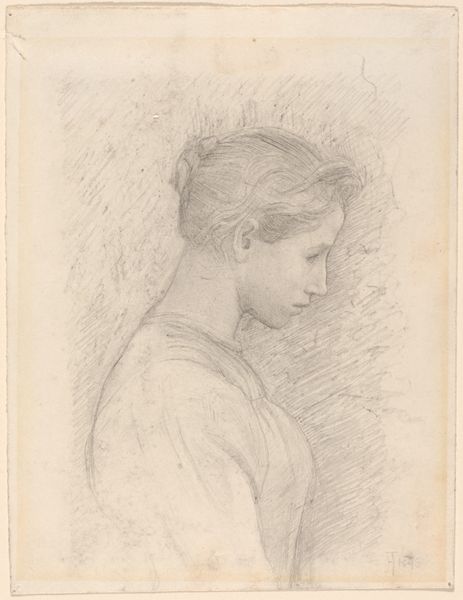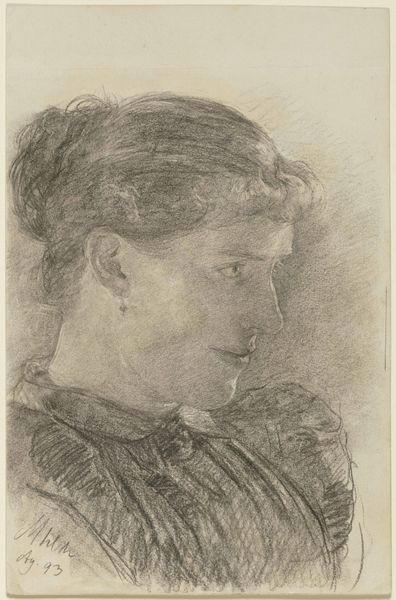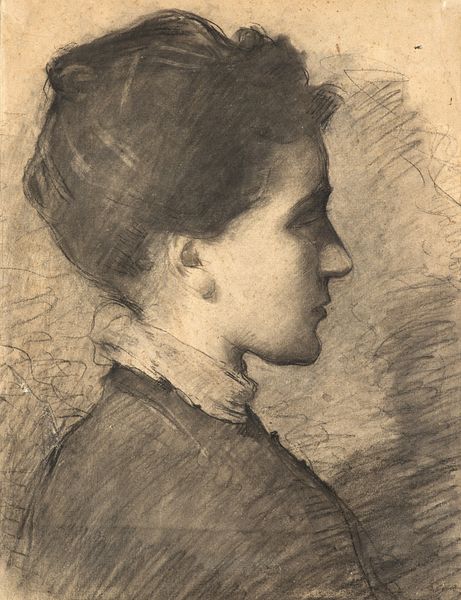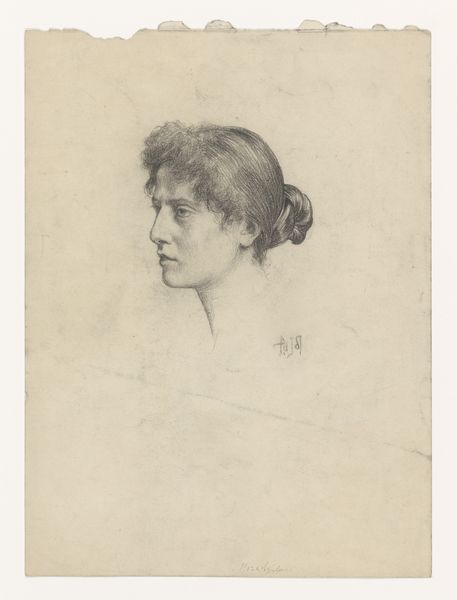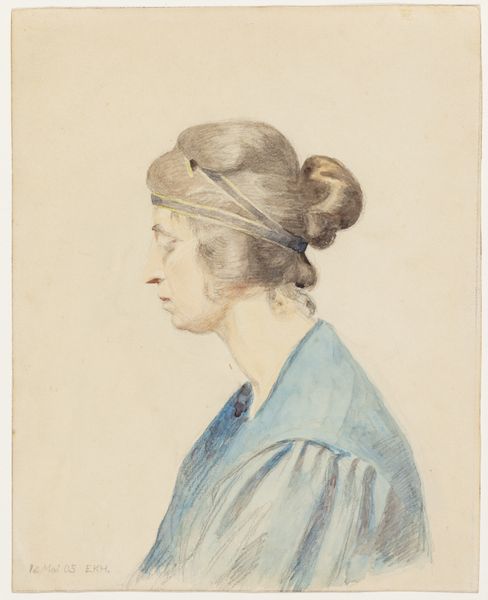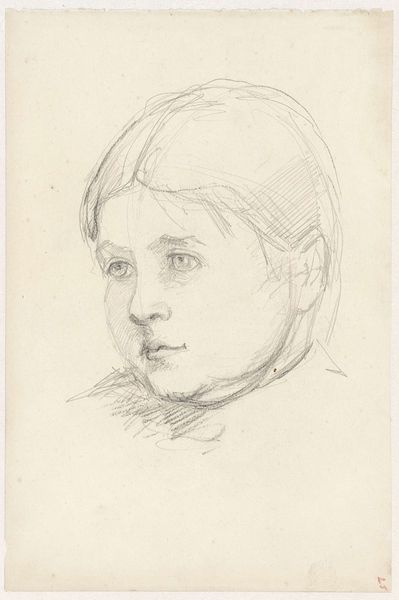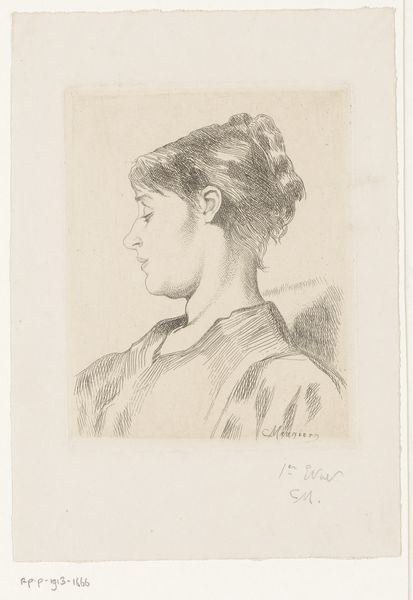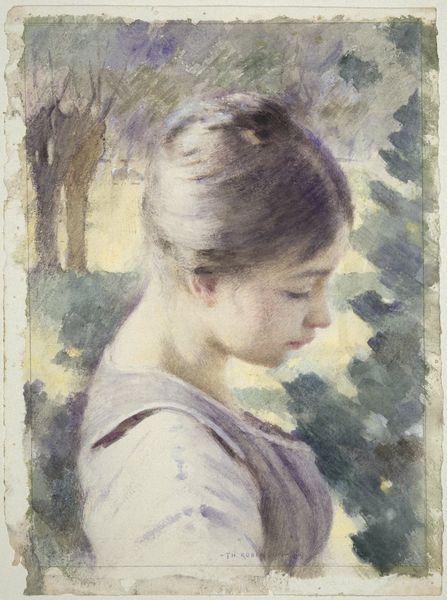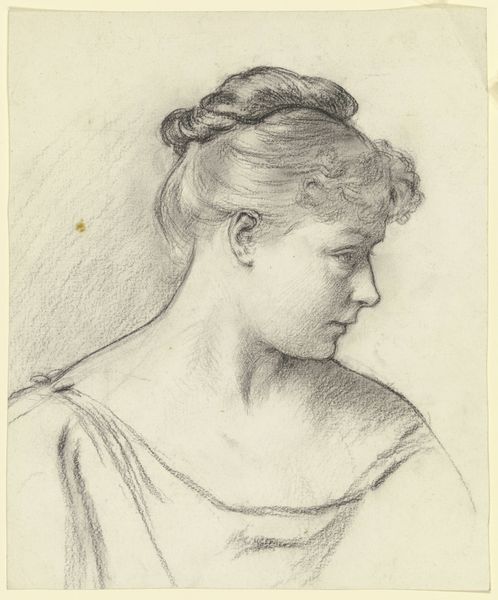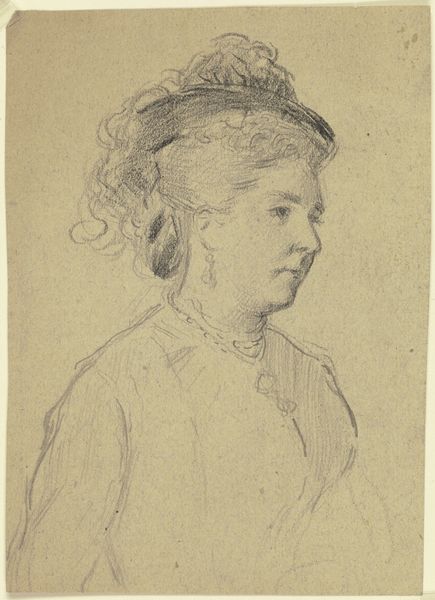
Dimensions: height 462 mm, width 424 mm
Copyright: Rijks Museum: Open Domain
Editor: This is Thérèse Schwartze's "Portret van een jonge vrouw," from 1912, made with pastel. It's so understated, almost melancholy. What strikes you most when you look at this portrait? Curator: I'm immediately drawn to the sitter's gaze – averted, internal. It makes me consider the politics of visibility for women in the early 20th century. Schwartze, a successful woman artist herself, was navigating a world that still largely defined women through the male gaze. Do you think this portrait resists that in some way? Editor: That’s an interesting point. How so? Curator: Well, consider the subject’s downcast eyes and simple attire. It lacks the performative femininity often expected in portraits of women during that era. I wonder if Schwartze is making a subtle statement about the inner lives and complexities of young women beyond their outward appearance. What does her posture communicate? Editor: It seems to suggest contemplation... maybe even a quiet defiance? But I wouldn't have thought of the male gaze right away. Curator: Exactly! It's about considering the power dynamics at play. Schwartze, working in a male-dominated art world, capturing a young woman not performing for an audience…it opens up so many questions about female representation and agency. Do you agree it's Schartze who's gaze is the subject of the work rather than that of any men observing it? Editor: Definitely. Looking at it through that lens gives it a whole new dimension. Curator: It's a reminder that art isn't created in a vacuum. Examining the historical context can reveal so much about an artist's intentions and the broader cultural conversations they were engaging in. Editor: I’ll keep that in mind for future encounters with similar portraits. Thanks.
Comments
No comments
Be the first to comment and join the conversation on the ultimate creative platform.
